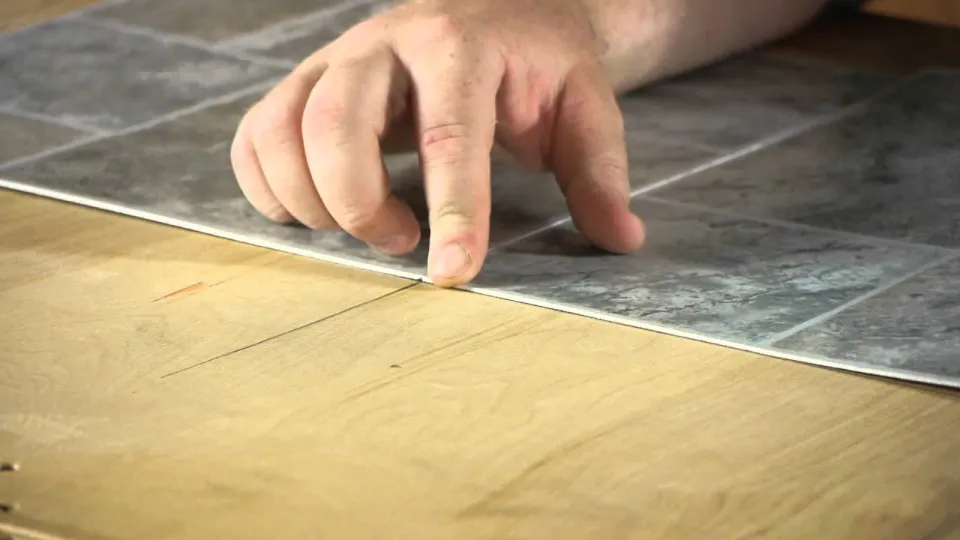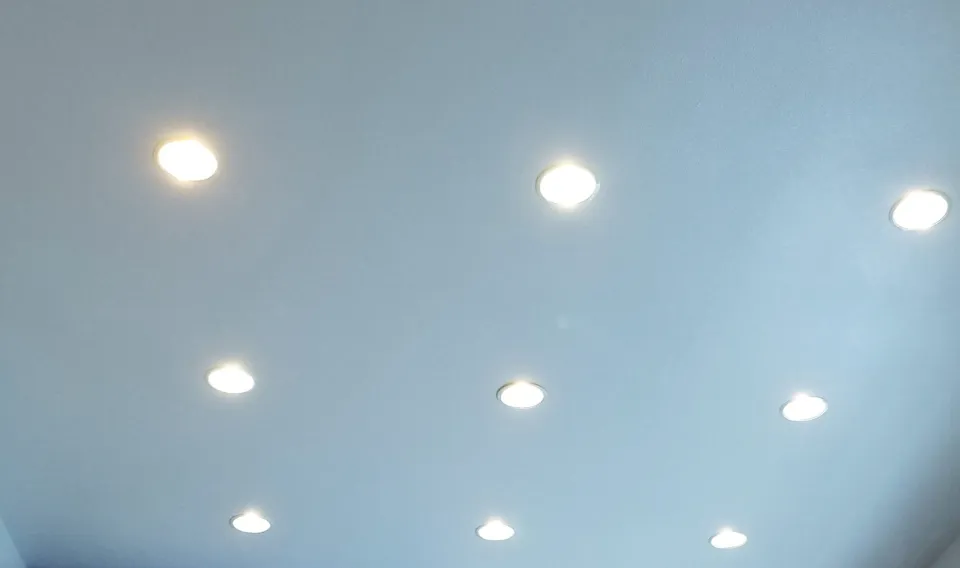Can you tile over linoleum? The answer is YES! You can install tile over linoleum flooring. Below will give you steps to tile over linoleum.
Who doesn’t want more time or energy? This can help you save both when remodeling the floors in your home.
Let’s discuss the dos and don’ts when it comes to installing tile over already-installed flooring.For more information, continue reading.
Why Tile Over Linoleum?
The idea of putting tile over the linoleum makes sense when you are looking at your kitchen or bathroom and thinking that you’d like to change something or freshen it up. It’s not, but it can be done if you approach it the right way.
Read about:
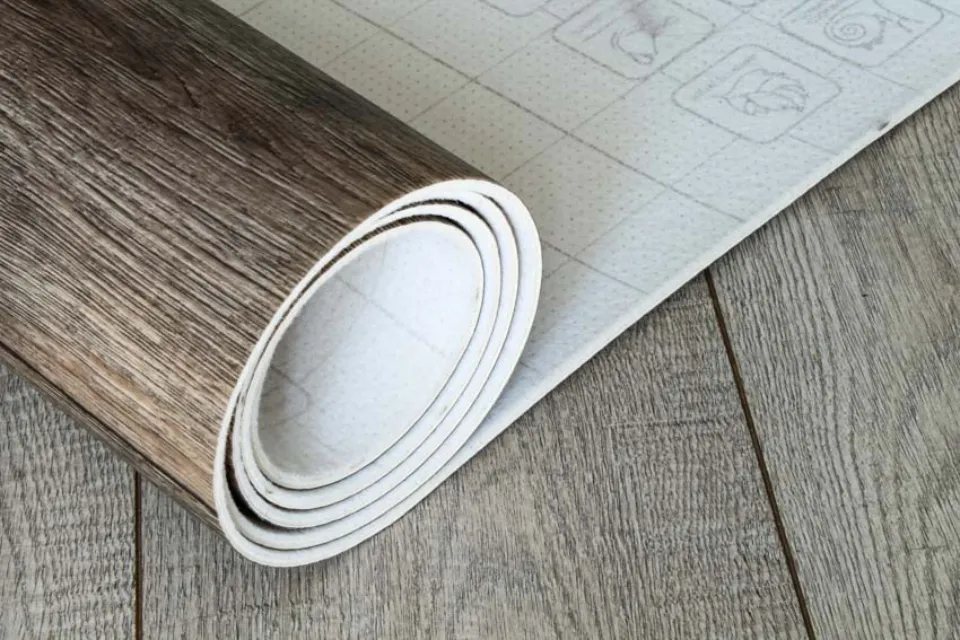
Things to Consider
How is the condition of your old flooring? Before tiling, it might be best to remove any existing flooring that has any tears, rips, or damage. Make sure your linoleum flooring is glued down and not separating from the subfloor or being damaged. Tiles cannot be laid over loose-lay flooring (permitted glued) because the latter will eventually fall apart.
A full sheet of flooring that is firmly affixed to the subfloor is the best option to think about. If vinyl tiles are sufficiently adhered, though, you can tile over them. Therefore, you can lay tile over linoleum flooring if your flooring satisfies this requirement.
- Do
Make sure the flooring’s height won’t be a problem. Vinyl flooring is usually 12 mm or thinner so this usually is not an issue.
In order to avoid height issues around doors, flanges, and baseboards, it is always best to double-check the height of your flooring or sub-layer.
Is the subfloor level? The flooring beneath must be adequate, regardless of how well the linoleum is adhered. Tile and/or grout can crack over time as a result of soft, thin, or damaged subflooring that flexes or shifts excessively.
- Don‘t
If the flooring was installed before 1990, it should be removed because it might contain asbestos. Asbestos is a substance that can cause cancer and should not be handled. Do not hesitate to have it tested if you are unsure.
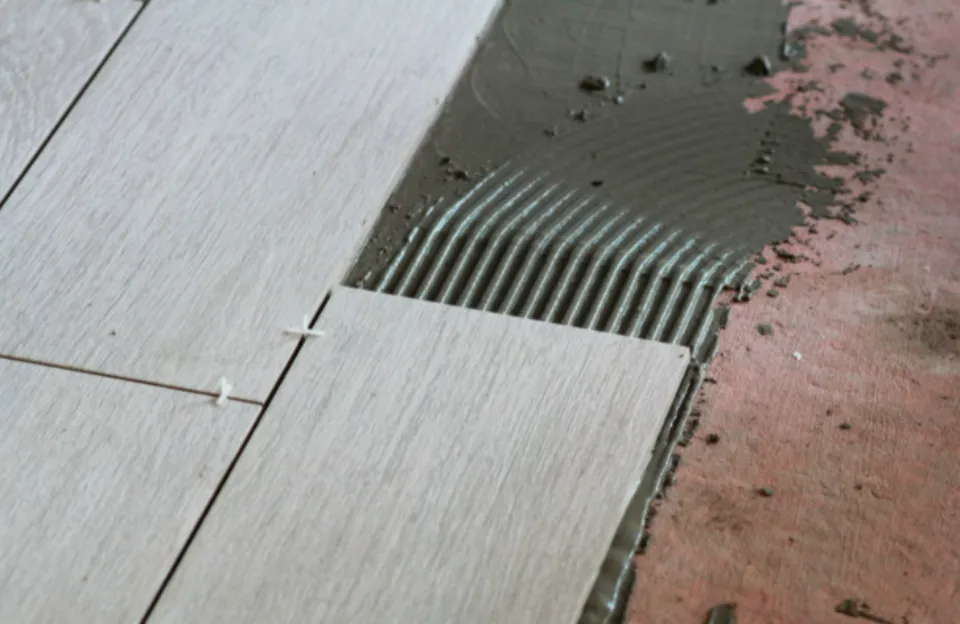
Preparing Flooring for Installation
If you choose to lay tile over linoleum flooring, there are a few preparations to make before starting.
To make sure there are no waxes, sealants, or other materials on the old flooring, you must clean it.
Additionally, keep in mind that some vinyl flooring is extremely smooth. It is therefore a poor surface for adhesion. For the mortar to better chemically adhere to the old flooring, you’ll need to rough up the top layer.
Use an orbital sander and rough (80–100 grit) sandpaper to sand the surface to accomplish this.
- Don‘t
On top of cushioned or foam-backed flooring, use tile. This won’t give you a sturdy subfloor. Only a single application of tile over linoleum is acceptable.
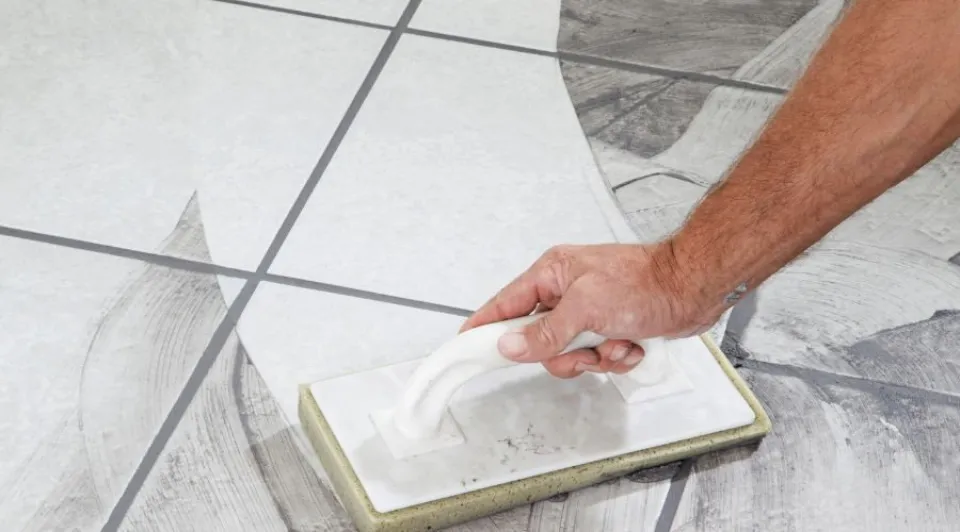
When to Use a Sub-layer
Adding a sub-layer is always a safe choice if there is any doubt about the integrity of the flooring to be tiled. Even though this doesn’t directly replace linoleum flooring with tile, it does make it unnecessary to take out the old flooring.
A sub-layer will help balance the surface and increase the mortar’s adherence to the tile. But it’s best to add a more appropriate sub-layer if there’s even a remote chance that the old flooring won’t work.
- Do
If the old linoleum flooring is stable and level, you can install tile over it. Time and effort can be saved!
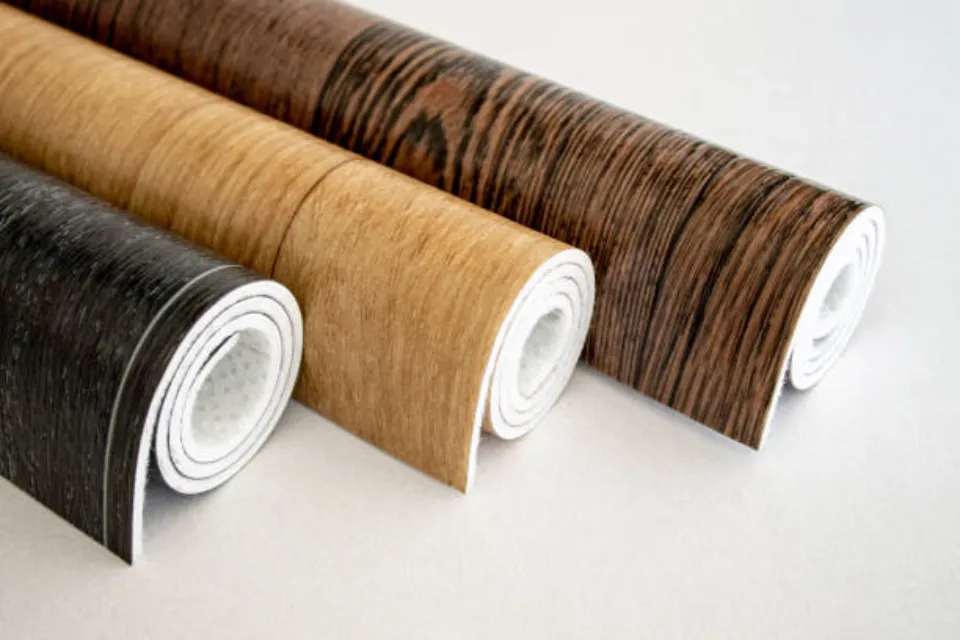
Steps to Install Tile over Linoleum Flooring
The best linoleum to lay ceramic tiles on would be sheet flooring that is fully glued down. If you are doing your installation on glued tiles or planks, make sure none of the boards are loose, peeling, or curling up. These are the procedures to follow when installing tile over linoleum.
Examine the Floor
Check the condition and suitability of the linoleum before moving on to the next step to ensure it can actually accept ceramic tile. The subfloor and joists supporting the floor structure must also be stiff and free of damages. The floor will be able to support the heavy weight of the tiles and the mortar holding them in place as a result.
Undersized joists or thin, soft, or damaged subfloors are likely to flex, cracking the grout joints and the tiles. If your subfloor is too thin or not as stiff as it should be, try installing plywood over linoleum flooring, followed by a thin layer of cement board.
Prepare the Floor
You can move forward and begin preparing the surface on which the tiles will be laid if your linoleum flooring and its subfloor satisfy the fundamental requirements for tile installation.
First, you need to thoroughly clean the floor with plain water. Simply pour clean water into a bucket and use your mop to remove dirt, dust, and grease.
The flooring should then be lightly sanded with an oscillating sander to add texture so that the thin skin adhesive will adhere. If you are not working on a large area and you don’t mind kneeling, you can use a random-orbit sander.
After you finish sanding, clean the flooring once more with just plain water to get rid of the sanding dust.
Right now, look around for any protrusions like nails or screws and pound or screw them back into place. Use a utility knife to remove the warped areas of the flooring if it has any.
Your floor needs to be completely smooth before you start your installation. Make sure it is fully dry too.
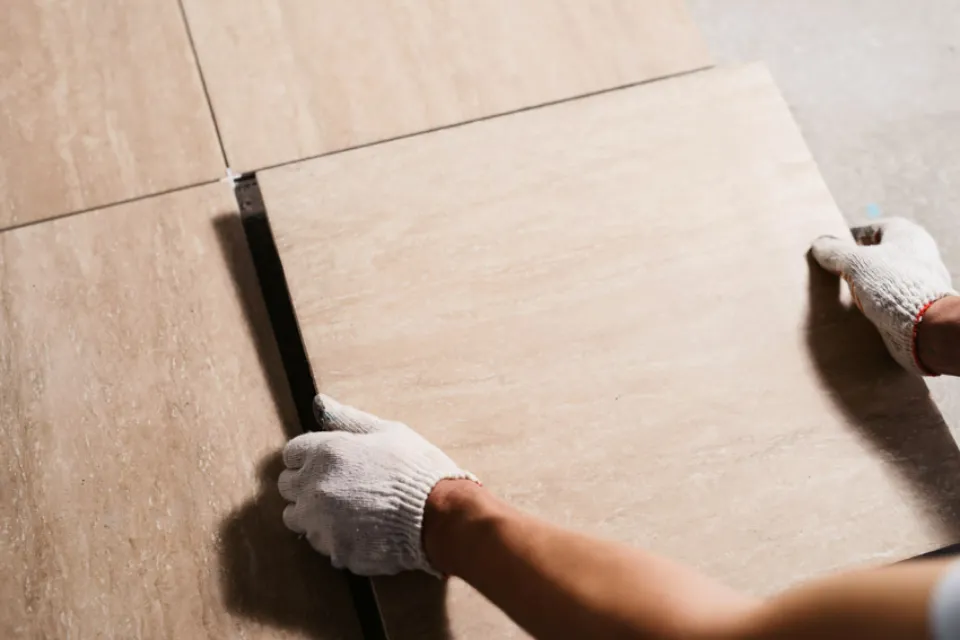
Lay the Thin Skin Material
To give the tiles a surface to rest on, cover your linoleum flooring with a thin skin of fabric. To do this, apply a thin layer of adhesive across the entire flooring so the thin skin can attach firmly to the ground.
Then, using a putty knife, press the skin into the glue to create a surface for spreading the mortar. Leave the fabric for about thirty minutes to give the adhesive enough time to harden and attach the fabric firmly to the flooring.
Coat the Thin Skin Fabric With Mortar
The thin skin fabric should have a layer of mortar applied to it. This layer should be thin enough so it can dry quickly, yet thick enough to bond firmly with the fabric.
Allow the surface to dry for a few hours. The result will be a smooth, masonry surface over which you can lay your ceramic tiles.
This new layer of mortar will literally cover all the dents and blemishes that may make it difficult to lay tiles over linoleum flooring.
Apply a second coat of mortar with a notched trowel after the first one has dried completely, being careful to make uniform grooves all over the surface. This entire process is designed to stop air gaps that could eventually lead to tile cracking.
Install the Tiles
When the mortar is still damp, place your tiles on it. As you press each tile into place, give it a little wiggle. This will guarantee that the mortar evenly coats the tile’s back.
Place each tile next to the edge of the adjacent tile to get cleaner edges. Then, to get the proper spacing, slide the tile just a little bit away from the adjacent tile.
As you work across the floor, install spacers at the corner where four tiles intersect or between two tiles. The grout lines will stay straight and uniform as a result. Use a plastic or rubber mallet to tap over each tile; it will get rid of any air underneath the tile.
Get Rid of Elevated Spots
When all of your tiles are in place, use a tile puck to test the levelness of your new flooring by moving it back and forth over the joints. The device will click if it locates a tile whose height is greater than the tiles next to it.
Check to see if your floor has any elevated areas by working your way across all the joints with your tile puck and rubber mallet.
Apply Grout Between Tile Spaces
Apply grout between the tile joints using a grout float, tilting it at a 45-degree angle. Once you’ve applied the first coat, clean the area around the joints with a sponge or other soft cloth dipped in water to get rid of any remaining grout on the tiles’ surface.
Depending on the thickness of your tiles, you may need to apply the grout a few more times to make sure the joints are completely covered. After each application, wash the area and let it dry completely before using again.
It will be more difficult to remove the grout later if you let any of it dry on the tile’s surface.
When everything is finished, mop your new floor to remove any dust or grout residue by filling a bucket with water, adding a few drops of mild detergent, and scrubbing.
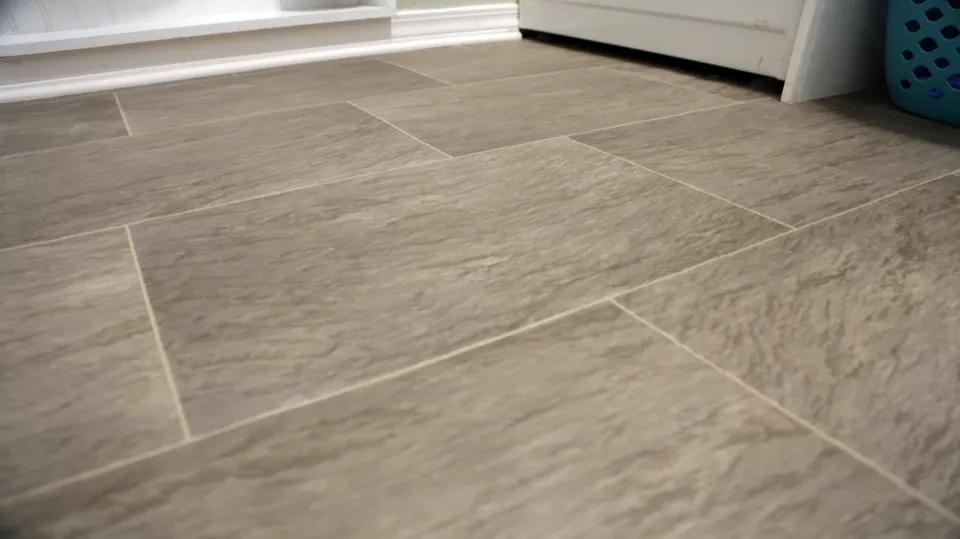
Other Tips for Tiling over Linoleum
When installing linoleum, it’s typical to only spot glue the center and edges. The linoleum floor is susceptible to sudden rises in portions.
You can make a tighter floor for your tiles to lay flat by using 1 to 1″ rust-proof screws or nails roughly every six inches on the linoleum flooring.
Pay attention to manufacturer recommendations when choosing a latex thin-set mortar for your project.
If you have tested your linoleum, or it was installed after 1990, it is a good idea to sand or scarify the surface (then clean thoroughly) before applying the bonding material. A better bond between the tile and the linoleum will result from roughening up the surface.
Do not forget that baseboard and stripping must be removed prior to tiling.
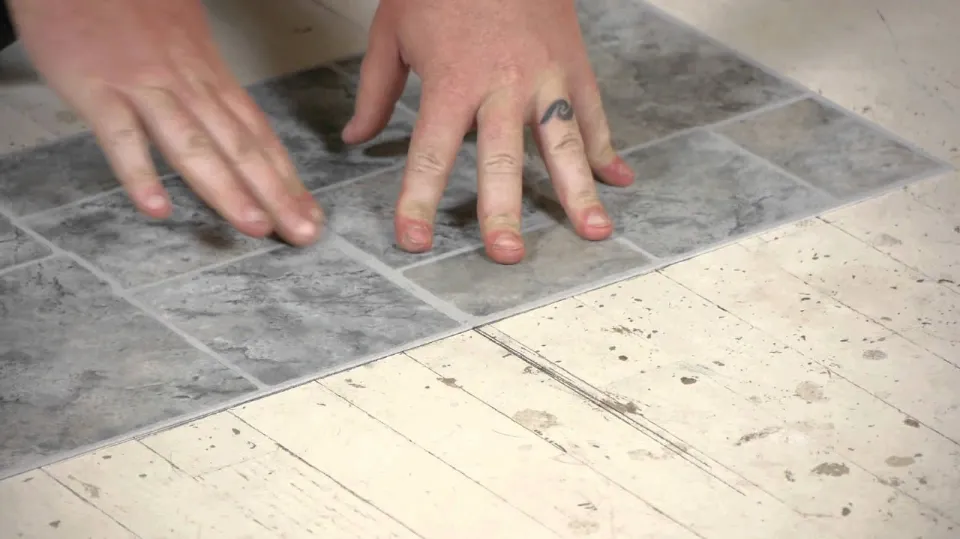
FAQs
What Happens When You Lay Tile over Linoleum?
If your linoleum floors are starting to become loose, uneven, or warped, installing tile over them is NOT recommended. Tile needs a smooth, level base in order for it to stay securely in place. In order to install your new tile on an even surface, damaged linoleum floors should be removed.
Should You Remove Vinyl Flooring before Tiling?
The good news is that you really can save your time, money and effort on removing your old vinyl covering – in most cases, tiles can be laid right on it.
Can Tile Be Installed over Sheet Vinyl?
Yes, but in single-family residences only. Ceramic tile or porcelain tile both can be installed over an existing single layer of non-cushioned sheet vinyl as long as the vinyl is fully adhered to the substrate and is not perimeter-glued or loose-laid.
Can I Tile over Vinyl?
Most manufacturers’ of tile cement (thinset) have developed a specialty thinset for setting tile that bonds well to sheet vinyl. However, as with all tile installations, the entire subfloor beneath the tile is crucial; not just the layer to which the tile is bonded.
What is the Difference Between Linoleum and Vinyl?
Linoleum has distinct wear characteristics because it is a completely solid material that lacks any printed design layers. The 1920s saw the discovery of vinyl as a material. It is entirely synthetic, as opposed to linoleum, and primarily made of PVC (polyvinyl chloride).
Summary: Can You Tile Over Linoleum?
In summary, if your linoleum is in good condition, you can choose to tile over it using the procedure we described. Just make sure to prep the floor and give everything plenty of time to dry. Enjoy your new flooring!
If you have any questions, please leave a comment. My Prime Home tries to give you the best home improvement information. Don’t forget to share the post. Thank you for reading.
